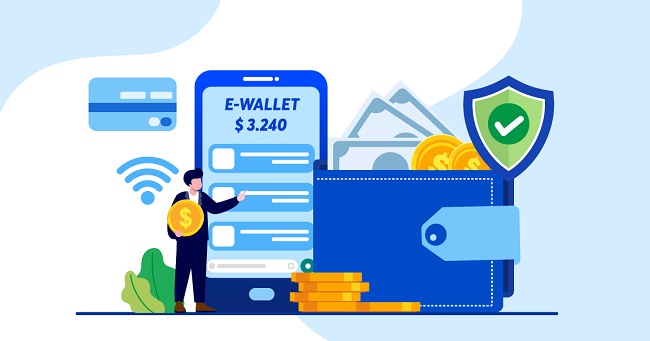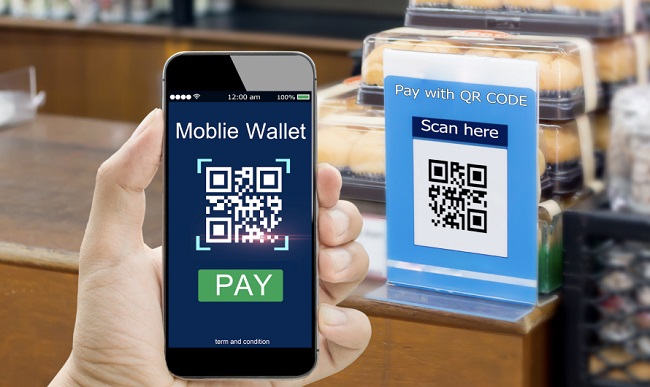A digital wallet is a software program or online payment tool that acts as the electronic equivalent of a physical wallet.
It allows users to safely store digital copies of payment methods, such as credit and debit cards, gift cards, cryptocurrency, boarding passes, event tickets, passwords, and coupons, to use on the go with their smartphones or smartwatches.
This type of wallet is also referred to as an electronic wallet, e-wallet, or mobile wallet. You can learn how to create a wallet app.

Customers can purchase with a digital wallet in-person, online, or through a digital wallet app. They typically use a contactless payment terminal for in-store transactions by touching their contactless credit card, a smartphone, or a smartwatch over the terminal.
It will help with how to create a digital wallet app (based on time-tested Topflight Apps’ experience).
Read Also:
- MTV Activate Guide
- If You Screen Record Someone’s Instagram Story
- Can Someone See if You Screen Record Their Instagram Story
Contents
How do Digital Wallets Work?
To develop a mobile wallet, you need to know how they work. The purpose of digital wallets is to increase access to financial goods and services by utilizing the capabilities of mobile devices. Due to their ability to safely and conveniently store a user’s payment information, digital wallets effectively do away with the need to carry a traditional wallet.
Users must submit their card information to the digital wallet website or app to utilize it. Once the device has been unlocked and the user has permitted the wallet, the information is encrypted.
With this, the wallet is ready for usage. The user needs to hold their smartphone close to the contactless terminal to perform a mobile payment.
Technologies Used By Digital Wallets
- Quick response (QR codes) are matrix bar codes that can hold data. To start a transaction, you utilize the camera on your device and the scanning feature of the wallet.
- Near-field communication (NFC) is a technology that connects two smart devices and uses electromagnetic signals to transfer data between them. To connect, two devices must be around 4 centimeters (1 inch) of one another.
- Magnetic Secure Transmission: The same technology that magnetic card readers use to read your card when you swipe it through a slot at a point of sale is known as secure magnetic transmission (MST). This encrypted field is generated by your phone and can be read by the point of sale.
Read Also:
How to Create a Wallet App
The following are steps that will help with e-wallet software development.
1. Market Analysis
Market research and competitor analysis should always be the first steps in successful app development. This stage is crucial since it requires you to select your industry and target market, analyze your competitors, and figure out what your target market wants and how to provide it.
2. Finalization of the App Concept
The next step is to develop and complete the app concept after market research. Not only will this assist you in achieving your goals, but it will also greatly assist the development company in conducting business analysis and assessment.
3. Selecting an App Development Team
If you don’t have an internal team, you should employ a reputable firm specializing in creating crypto-related apps. When selecting your development company, there are certain things you should keep in mind. They include:
- Start your search online using sites like Manifest, Clutch, and firms.
- Examine your portfolio and client testimonials.
- Conduct interviews with various businesses.
- Ask about experience in a certain niche.
4. UI/UX Design
Design is of great importance to digital wallet app development. The application’s design will impact how the customer perceives the final product. Whether or not consumers choose to use this app depends on what they see and how they feel about it.
To ensure that the interface is appealing and appropriate for e-wallets, it is crucial to ensure that the design team also has relevant experience in the field.

5. Development
The development team you select begins converting the wireframes and mockups provided by the design team into a functioning application and adding all the required features.
We suggest using the Agile methodology when creating an app because it enables quick market entry and minimizes costly errors. It will help when you build your own e-wallet.
6. Launch and Promotion of the App
You’ll need to consider marketing after you release the app on the market. Nevertheless, it is always best to begin drafting a marketing strategy during the initial development phase and then modify it in light of the finished product. It would help if you thought about various platforms and campaigns to ensure the app stands out from the competition.
Read Also:
7. Continuous Improvement & Support
This is the last stage of how to create a wallet app. At launch, the development process doesn’t end. You will need to make changes after the initial users leave their feedback.
It is crucial to gather feedback because it will enable you to determine what users like and don’t like so that you can make changes accordingly.
It’s imperative to constantly update your app by giving it access to cutting-edge technologies as soon as they become available or when fresh trends emerge.






























